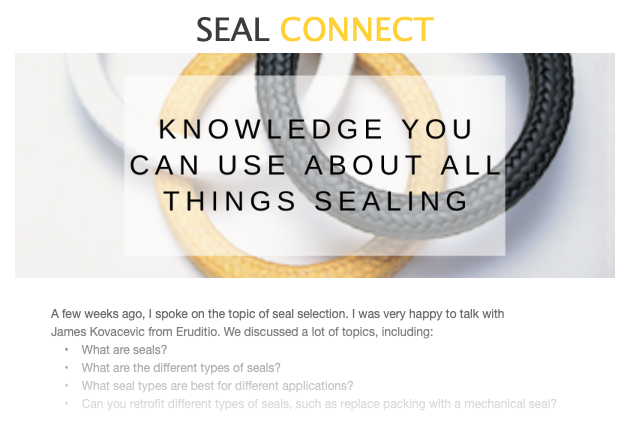Maximize Your EAM, CMMS, and Reliability by Tracking Mechanical Seals
Mechanical seals have become the primary method for sealing, so it makes sense that the industrial process pump repair cycle often is driven by the lifespan of this component. However, most end users do not consider tracking mechanical seals. Here’s the thing …
According to a recent article in Plant Engineering, seals are mistakenly treated as a replacement part or consumable item. However, you should treat and track them as a rotating asset via an enterprise asset management system (EAM) or a computerized maintenance management software (CMMS).
This raises two questions:
- Will tracking mechanical seals in an EAM or a CMMS system be innovative enough to justify the pangs that often come with instituting a process change?
- What are the primary benefits?
Why You Should Track Seals
According to the article in Plant Engineering, as a spare part, mechanical seals are grouped together in a bin location by item number. So, they are only tracked by inventory use and are considered disposable.
“In reality, the seal is sent out for repair and received again as anew item at the rebuild cost,” Tindell wrote. “The rebuilt rotating item has a serial number and a rebuild history that is lost because of this item’s master classification.”
End users do not effectively or efficiently use their EAM or CMMS for tracking their mechanical seal processes and inventory.

“This takes time and effort to set up, and often teams are reacting to problems and may not have time to do this,” the article said. “However, maintenance and reliability teams pay for and install mechanical seals without much idea of how they perform after installation.”
Mechanical seals often are impossible to track because they were being rebuilt but still treated as a consumable item. This left teams with no seal history. If the asset is not tracked, how could they expect to know things like:
- The cause of failure
- Where the seal went after it failed
- If the seal was repaired and reinstalled
- Whether the repaired seal was installed in a different pump
How Can Tracking Your Mechanical Seal Help Avoid Seal Failure?
By digging to the root of the problem, plant teams often find that the seal failure was a symptom of bigger process problems. Mechanical seals should be tracked because they are repairable and have a history.
Ultimately, identifying and addressing the underlying causes of the seal failure improves the system reliability and extends pump life. Tracking seal processes in the EAM or CMMS increases your ability to identify and address chronic and premature seal failures
Read the full article on PlantEngineering.com to learn how to track mechanical seals in your plant.
 SEAL CONNECT
SEAL CONNECT Find Your Sealing Solution
Find Your Sealing Solution